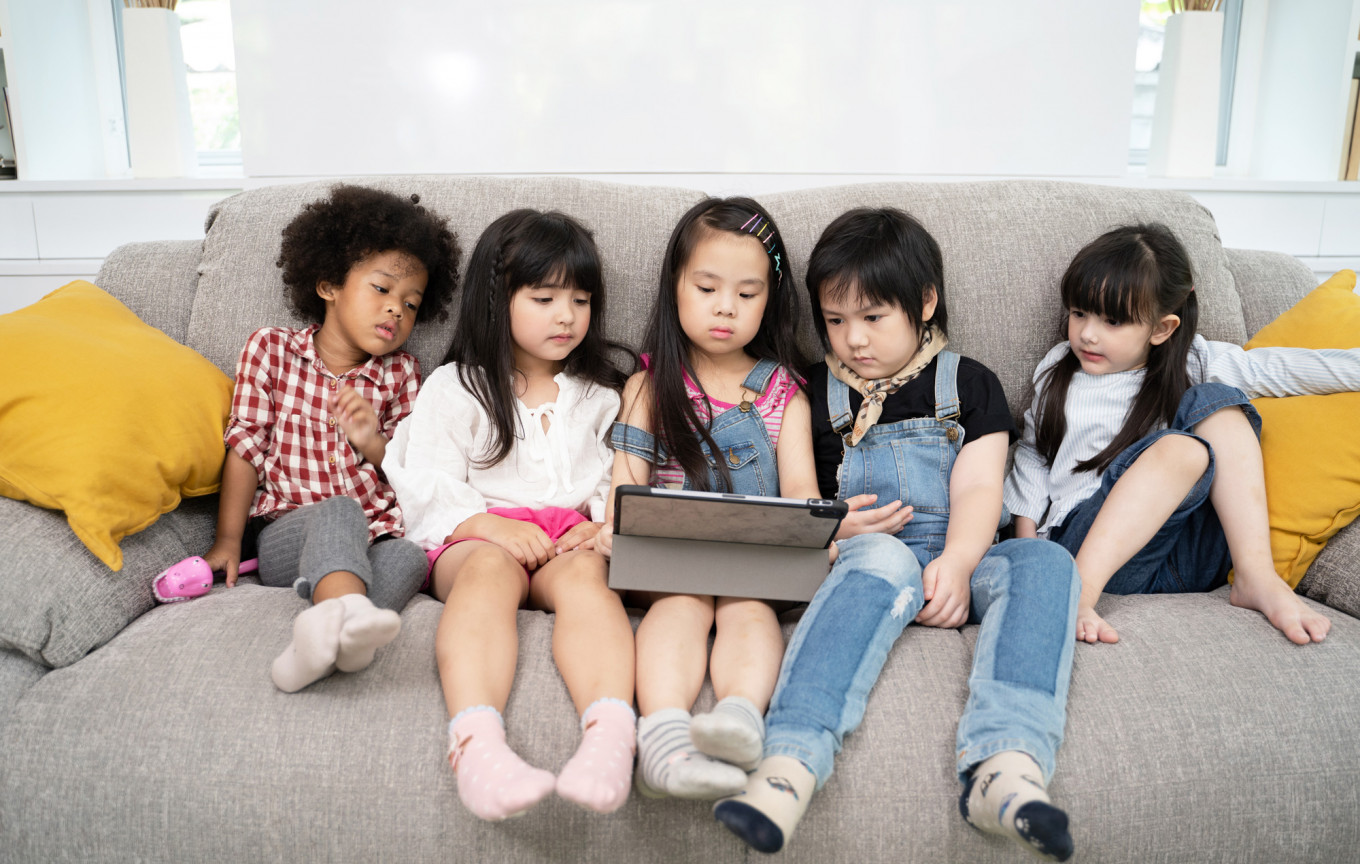(Courtesy of Shutterstock)
On a slow Sunday afternoon, I watched as my sister and my 4-year-old nephew discussed what he needed and wanted to start kindergarten. He had it all planned out: the enviable schoolbag, pencil case and lunch box. Yet, apparently he was missing one thing: the perfect water bottle.
“I want the Owala tumbler, the viral one,” he nagged.
Having had countless conversations about things he’s spotted on his grandmother’s TikTok account, this request was not at all surprising.
Welcome to the dawn of the era of consumerism of Generation Alpha: children born in 2010 and after.
They are more digitally native than any generation before them. They are heavily influenced by their favorite YouTube or TikTok stars, but only if the content is authentic. They follow trends, but prioritize personalization. And they care about social issues.
With Gen Alpha set to become the largest generation in history and the oldest among them entering adulthood in the next five years, brands are trying to understand and figure out how to engage them.

Thank you!
For signing up to our newsletter.
Please check your email for your newsletter subscription.
Individual users
If you’ve ever wondered why games like Roblox and Minecraft and social media app TikTok are fan favorites among kids these days, it’s because they encourage creativity and participation, according to customer experience management company Idomoo.
Highlight reels like Spotify Wrapped, which summarizes in minute detail a particular user’s music preferences, are also popular among younger demographics. These personalized recaps and year-in-review data resonate strongly with them.
This desire to be seen and treated as unique individuals instead of just passive consumers is far more predominant among today’s youth than their millennial parents, according to Nishi Gupta, a consumer insights expert from Kantar Indonesia. She says this trait is similar to their Gen Z predecessors.
But don’t make the mistake of lumping them together in one group: Teens in online chat rooms will destroy anyone who suggests they are of the same generation, though it’s hard to pinpoint exactly how different they are.
The impact of globalization may be a factor, as Western culture celebrates people with their own idiosyncrasies. For Gupta, this is a big departure from traditional market behavior in Indonesia, which has been generally more affiliative within each group.
Read also: Behind the scenes with social media star Leika Garudita
Add to cart
Authenticity is also critical to be appealing to Gen A consumers, another trait they have inherited from Gen Z.
This means it is important for them to see products or services being used by actual people. The “key opinion leaders” and influencers flooding TikTok and Instagram understand their authenticity matters more to their target audience than mere celebrity.
Idomoo’s research shows that 55 percent of kids want to buy something their favorite YouTube or Instagram star is using, wearing or consuming. Meanwhile, 49 percent of kids trust influencers as much as their own family and friends when it comes to product recommendations.
This is why more brands are now willing to pay influencers, so long as they are deemed relatable to their target market.
To illustrate, Agility PR Solution noted that 8-year-old twins Taytum and Oakley Fisher, among the world’s biggest influencers, earned US$300,000 a month through brand deals and advertising revenue.
But brands cannot just pay influencers and call it a day. Idomoo’s Theresa Nguyen says companies trying to appeal to the younger generation need to answer the following questions: “Are you committed to social causes? Are you just pushing products, or inviting consumers to take part in the conversation?”
Having been exposed to the Internet even before they can read, Gen Alpha kids are well-versed and forward-thinking when it comes to social issues, according to market research company GWI. They’re more inclined to believe that everyone should be treated the same, and consider this their top priority when they’re asked what’s most important to them.
According to What’s the BigData, an online news and expert insight platform for big data and artificial intelligence, some 66 percent of Gen Alpha consumers are likely to purchase from businesses that bring a useful and positive impact to the world.
Proceed to payment
These kids, however, do not have credit cards yet. Which begs the question: Should brands be marketing to them or to their parents?
“I think it has to be both. It has to be both,” says Gupta.
“You cannot ignore 10- or 11-year-olds because they are consuming media, right? And in fact, their media consumption is far more widespread. While they do not have money [...] they have a say that influences the decision-making that the parent still has,” she explains.
In fact, according to Idomoo, 87 percent of parents say their children influence their purchase decisions.
Gupta adds that products can be grouped into two categories: in-home or out-of-home occasions, with the latter referring to activities where parents are not present.
For drinks, for example, it would be better to prioritize advertising to the kids, because these are the instances where they will make their own decision about what they want to drink.
As for in-home products, it all comes down to a delicate balancing act.
“Brands will have to strike that balance to understand what are the situations and occasions where the child will have a bigger role to play [...] Let's say a toy, the child has to want it first and then they'll tell the parents,” Gupta says.
Read also: The state of Gen Alpha digital play
Brand responsibility
Brand strategists don’t have all the answers just yet. As per research protocol, Gupta noted that to talk to kids under 18, it usually involves a conversation with the parents. That is probably why at this point, most agencies do not have direct data on Gen Alpha.
“I think five years down the line, probably Gen Alpha will be in that life stage where they will be influencing decisions more and they will have a higher buying power. And probably by then, we would have cracked Gen Z for us to be able to move on to the next generation,” she says.
“I think it's just the beginning, just the start of the rise of Gen Alpha and their influence on marketing decisions and buying decisions.”
In the meantime, brands have to be more responsible about what they communicate to Gen Alpha. They are still kids, after all, and the prevalence of girls barely 14 years old applying luxury skincare products in your social media timeline is not a good sign.
“These kids are at a very sensitive age. What they're consuming, what they're seeing, they're believing,” Gupta says.
“So marketing an antiaging cream, targeting a Gen Alpha, I mean, a brand may not be doing it intentionally or directly to Gen Alpha, but they are getting exposed to all of that. So being responsible is very, very important.”
Read also: Are the kids alright? The Gen Alpha question
This article is part of The Weekender, a biweekly tabloid that appears in the Saturday edition of The Jakarta Post. Offering a variety of feature articles on lifestyle and culture, it aims to enriching your reading experience. Subscribe here to access The Jakarta Post's Saturday edition and all Premium content























